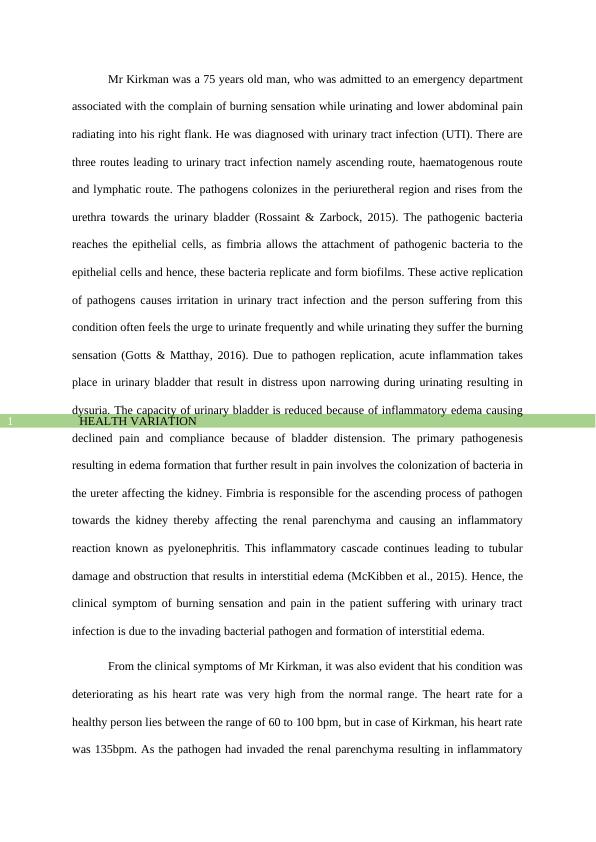Understanding the Pathogenesis of Urinary Tract Infection and Sepsis
7 Pages2026 Words1 Views
Added on 2022-12-22
About This Document
This article explores the pathogenesis of urinary tract infection (UTI) and sepsis, including the routes of infection and the impact on the body. It discusses the clinical symptoms of UTI and sepsis, as well as nursing strategies for managing these conditions. The article also includes an analysis of arterial blood gas results in a patient with UTI and sepsis.
Understanding the Pathogenesis of Urinary Tract Infection and Sepsis
Added on 2022-12-22
ShareRelated Documents
End of preview
Want to access all the pages? Upload your documents or become a member.
HEALTH VARIATION.
|7
|2153
|20
Urinary Tract Infection and its Manifestation: A Case Study
|8
|2054
|22
Urinary Tract Infection with Sepsis
|9
|2174
|59
Nursing Assignment: Case Study of Kirkman
|7
|2059
|71
Pathophysiology of UTI and Sepsis
|7
|1660
|419
Urinary Tract Infection with Severe Sepsis
|7
|1866
|44



